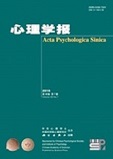Feeling trusted by supervisors is not only beneficial for employees’ job attitude and performance, but also for organizational effectiveness. Feeling ability-distrusted, defined as “the extent to which a subordinate perceives that their leader evaluates their ability to be untrustworthy”, is a crucial part of trust research. Previous research has revealed that feeling ability-distrusted by supervisors is detrimental to employees’ self-concept. Nevertheless, this prevailing assumption leaves our understandings of trust incomplete. Traditional Chinese management practice (e.g., “Jijiangfa”) has suggested that supervisors’ distrust may encourage employees to exhibit their better self. However, limited attention has been paid to the potential positive influence of employees' feeling ability- distrusted by their supervisors on their self-concept. For example, when employees perceive ability-distrust from their supervisors, they may lose their confidence in their abilities, or, on the other hand, may be motivated to prove their abilities. Thus, an important question is: Does feeling ability-distrusted by supervisors have both positive and negative effects on subordinates’ self-concept, and if so, why?
To address this question, drawing from self-evaluation and psychological reactant theories, we examine the effects of feeling ability-distrusted by supervisors on employees’ job self-efficacy and desire to prove their abilities, which in turn influence employee work effort and job performance. Furthermore, we examine the moderating effect of perceived supervisor competence on the relationship between feeling ability-distrusted by supervisors and employees’ job self-efficacy or employees’ desire to prove their abilities.
We conducted one experiment and two multi-wave field studies to test our hypothesis. In Study 1, we designed a 2 × 2 experiment, with 4 different scenarios. The scenarios described the interaction at work between a fictional employee named Wang Chen and his supervisor. We recruited 164 undergraduates from a university and assigned participants randomly to each of the scenarios. Each participant read the scenario and took on the role of Wang Chen. Next, participants reported their job self-efficacy, desire to prove their abilities, manipulation check, and demographics. In Study 2, we initially recruited 227 employees and their immediate supervisors from an insurance company in southern China. Employees were asked to report on their feeling ability-distrusted by their supervisors, job self-efficacy, desire to prove abilities, work effort, perceived supervisor competence, and demographics. One week later, supervisors were asked to report their subordinates’ job performance. Before responding to the surveys, participants were informed that the survey data would be confidential and only used for academic research., There were 195 pairs of matched and usable data for our final sample. In Study 3, we surveyed 266 employees and their supervisors across 65 workgroups. The employees reported on feelings of ability-distrust by their supervisors, perceived supervisor competence, and their demographics. One month later, employees were required to assess self-efficacy on the job, desire to prove their abilities and work effort. Supervisors were then invited to rate employees’ job performance.
Results showed that when perceived supervisor competence was high, feeling ability-distrusted by supervisors was negatively associated with job self-efficacy, which in turn, decreased employee work effort and task performance. On the other hand, when perceived supervisor competence was low, feeling ability-distrusted by supervisors was positively associated with employee’s desire to prove their abilities, which in turn increased employee work effort and task performance.
This study makes several theoretical contributions. First, we contribute to the literature on trust by challenging the consensus that feeling ability-distrusted by supervisors is unequivocally detrimental to employees’ self- concept. Second, we contribute by identifying an important boundary condition for the effects of feeling ability- distrusted by supervisors. From the perspective of perceived credibility of evaluation information, we found that perceived supervisor competence moderated the effects of feeling ability distrusted. Finally, we contribute to the literature on work effort by identifying an important but neglected antecedent of employee work effort. We suggest that beyond leaders’ positive behavior, their negative behaviors (e.g., expressed distrust) may also lead to employees’ increased work effort when employees perceive supervisor competence to be low.




